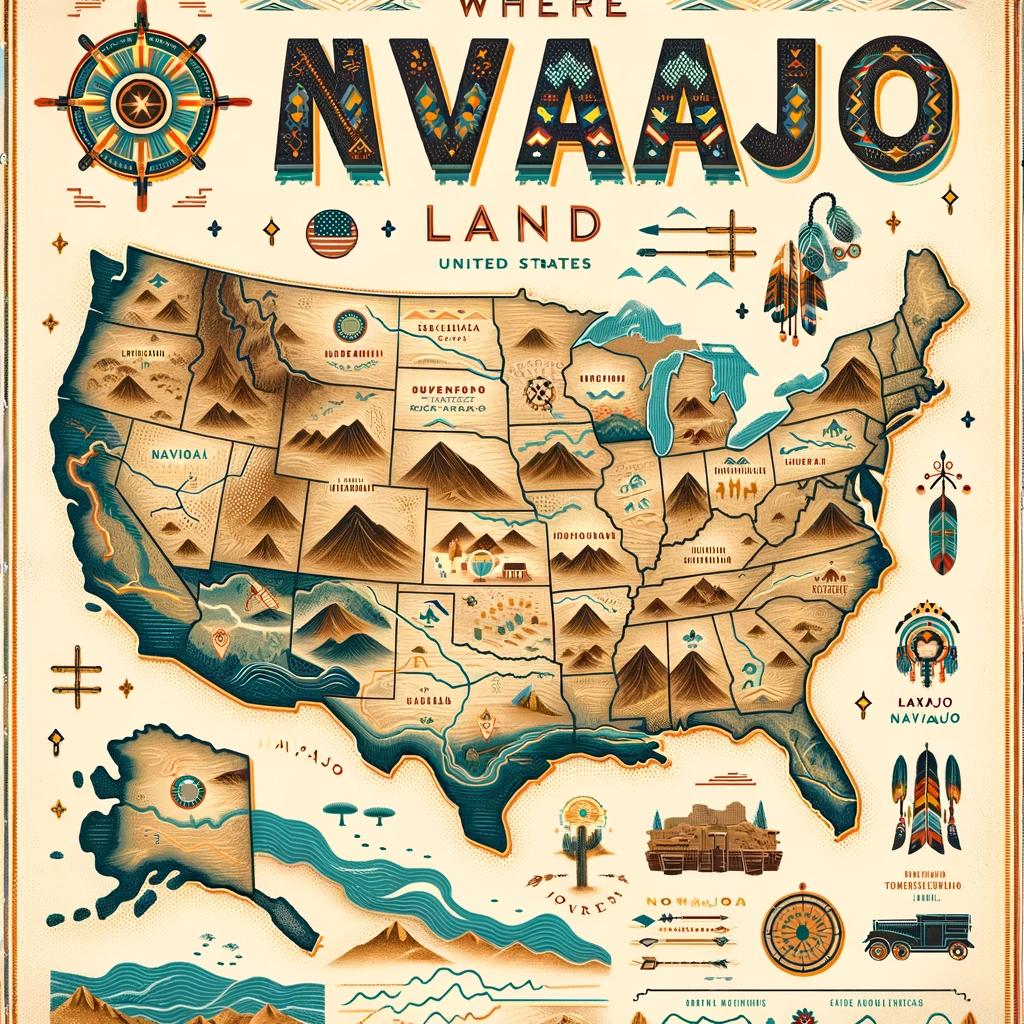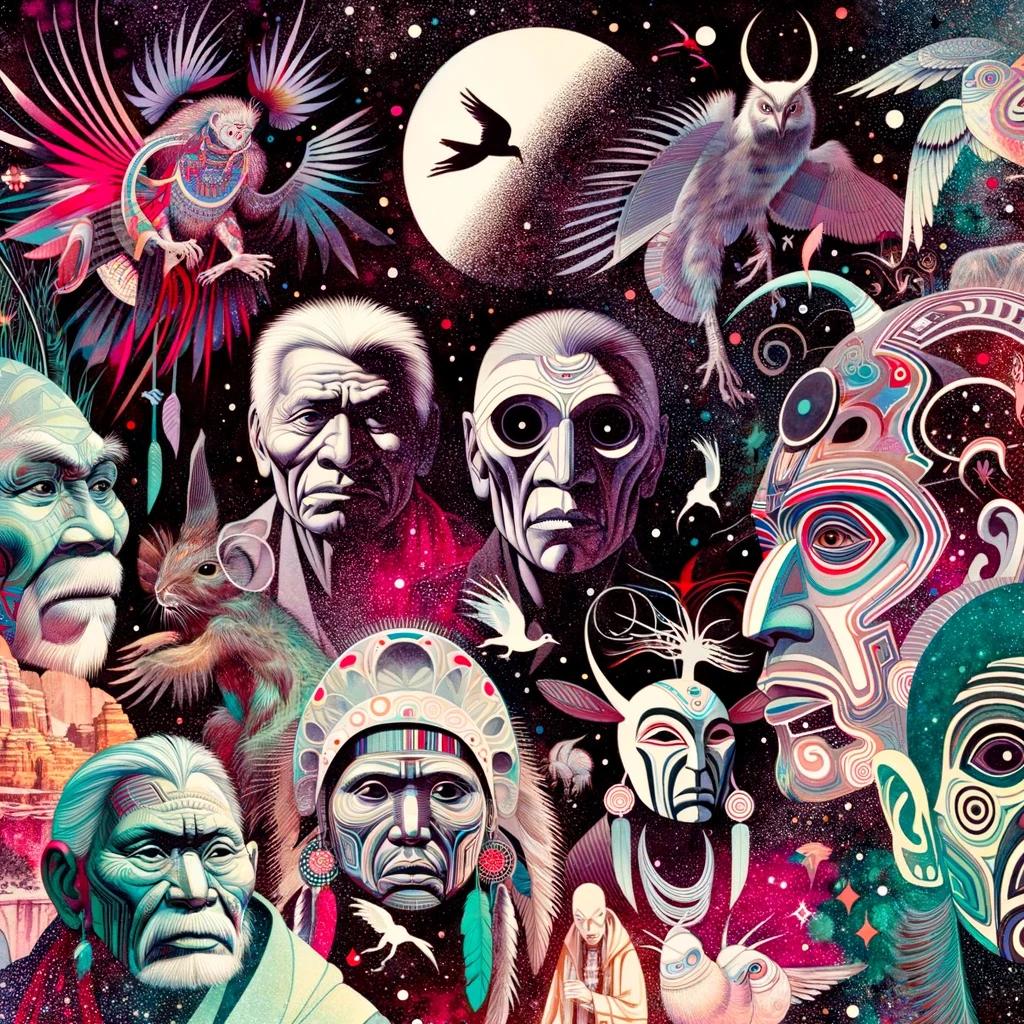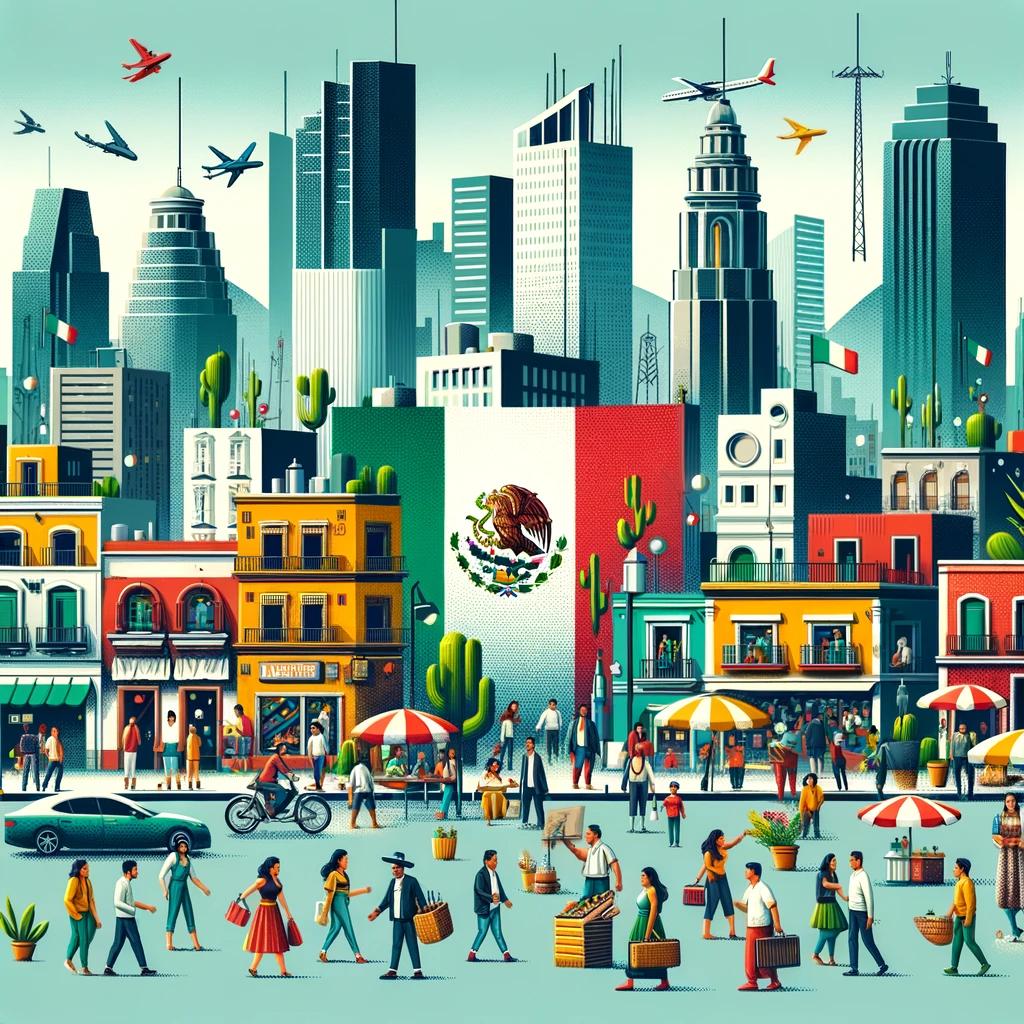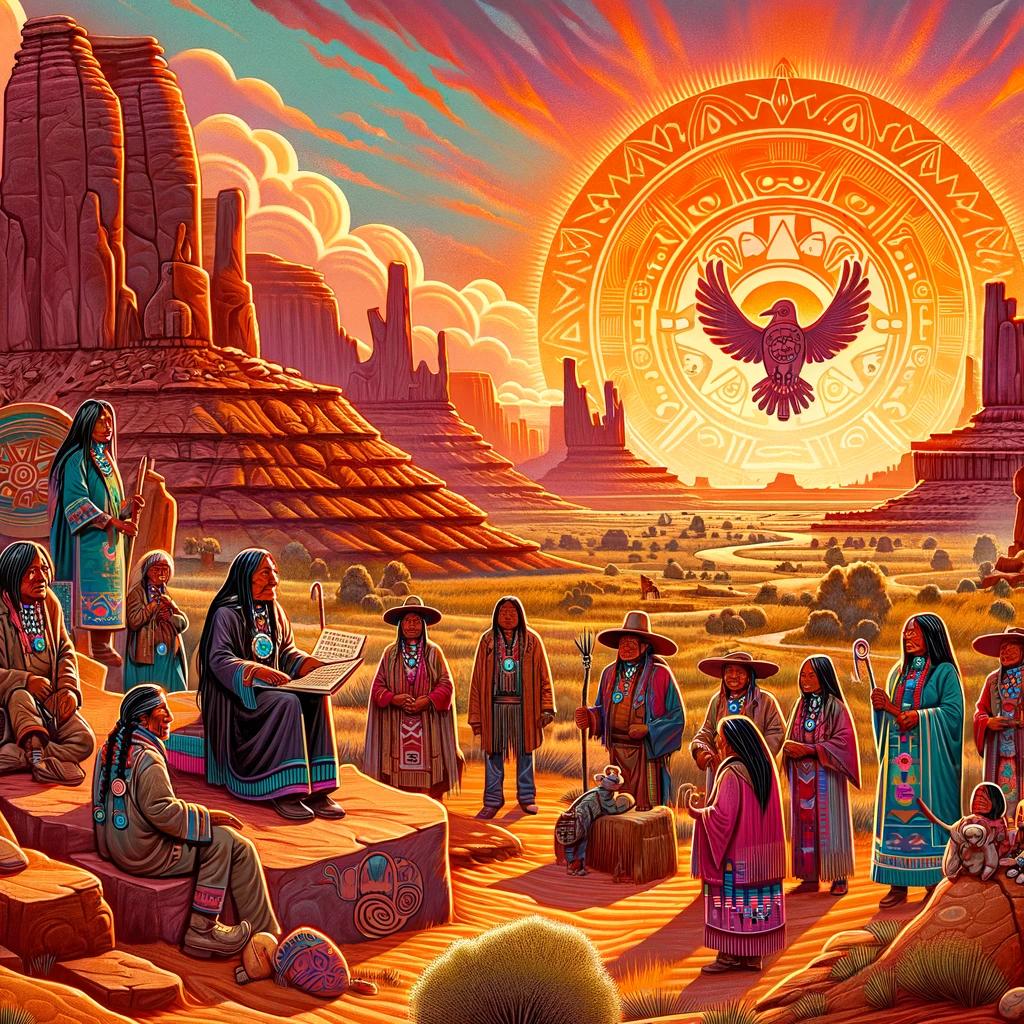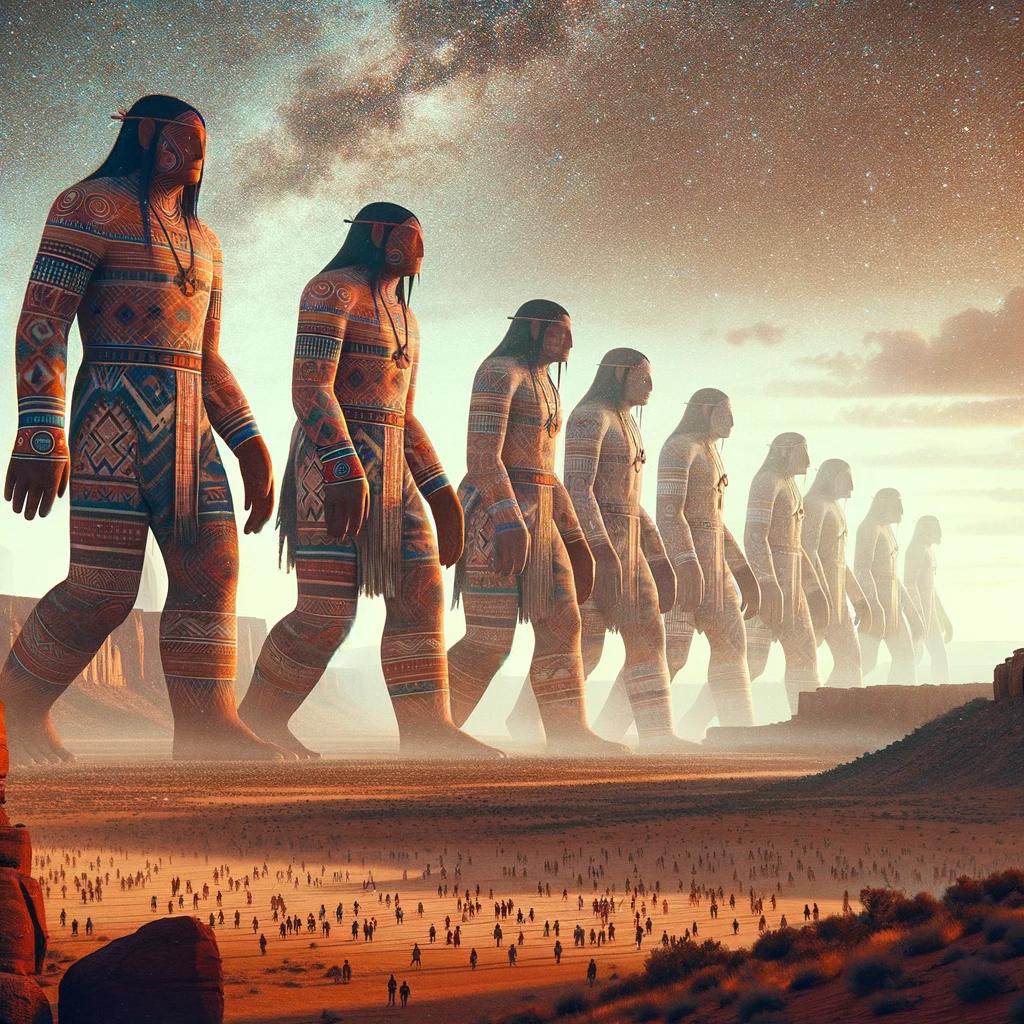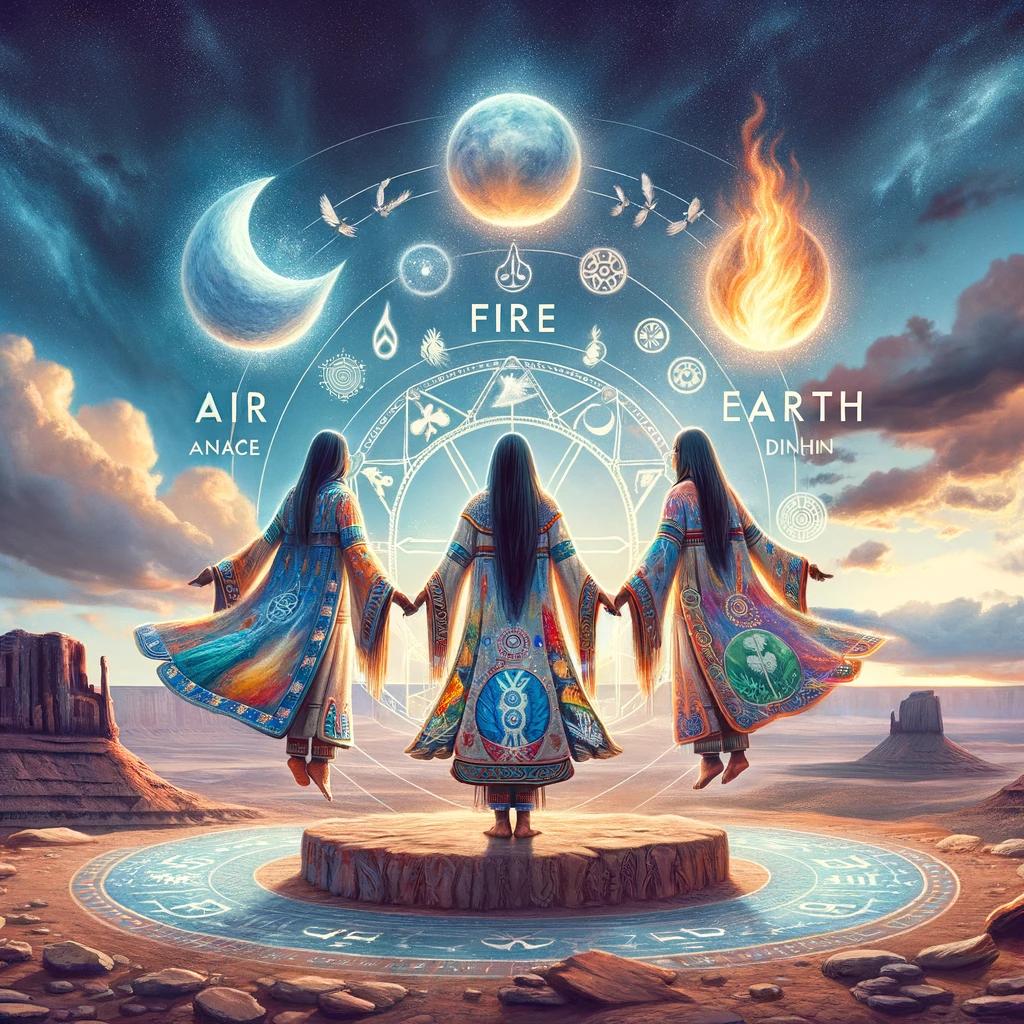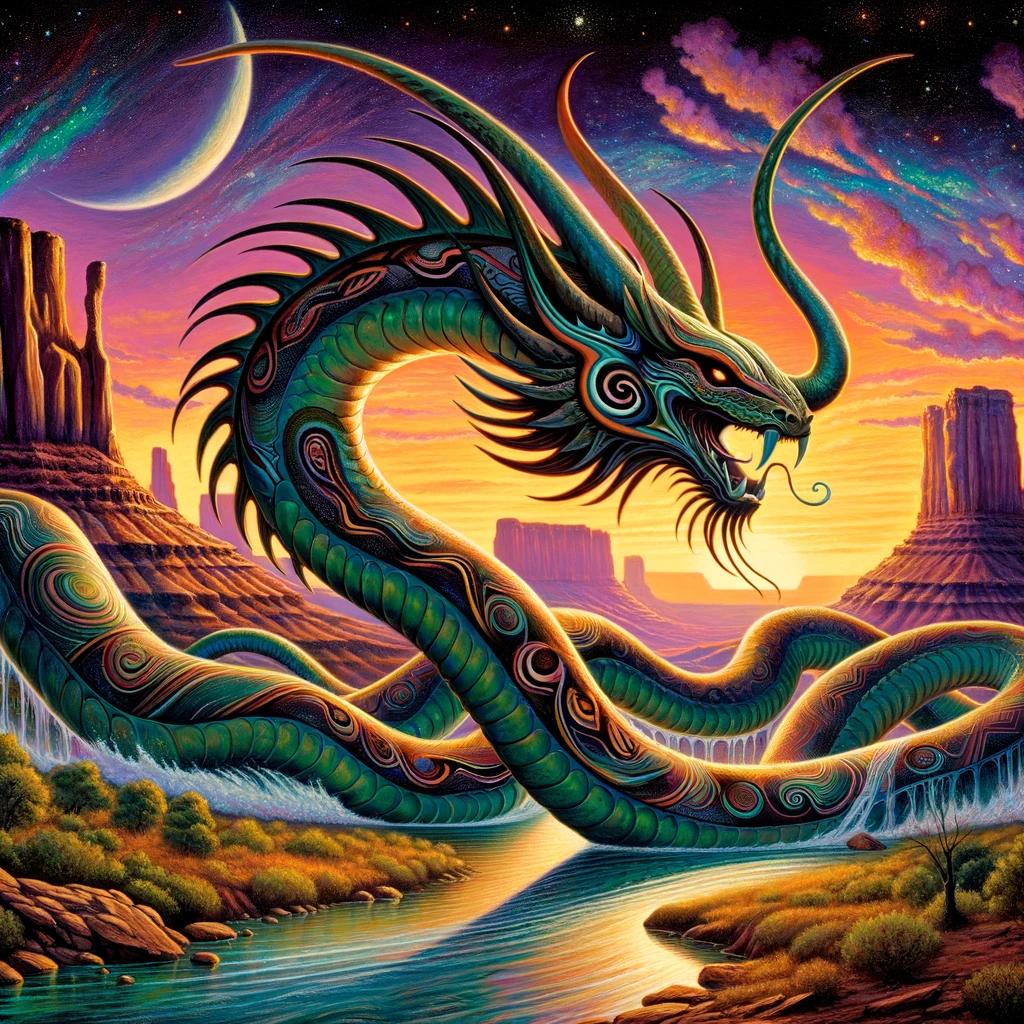Where is Navajo Land Located in the Southwest United States?
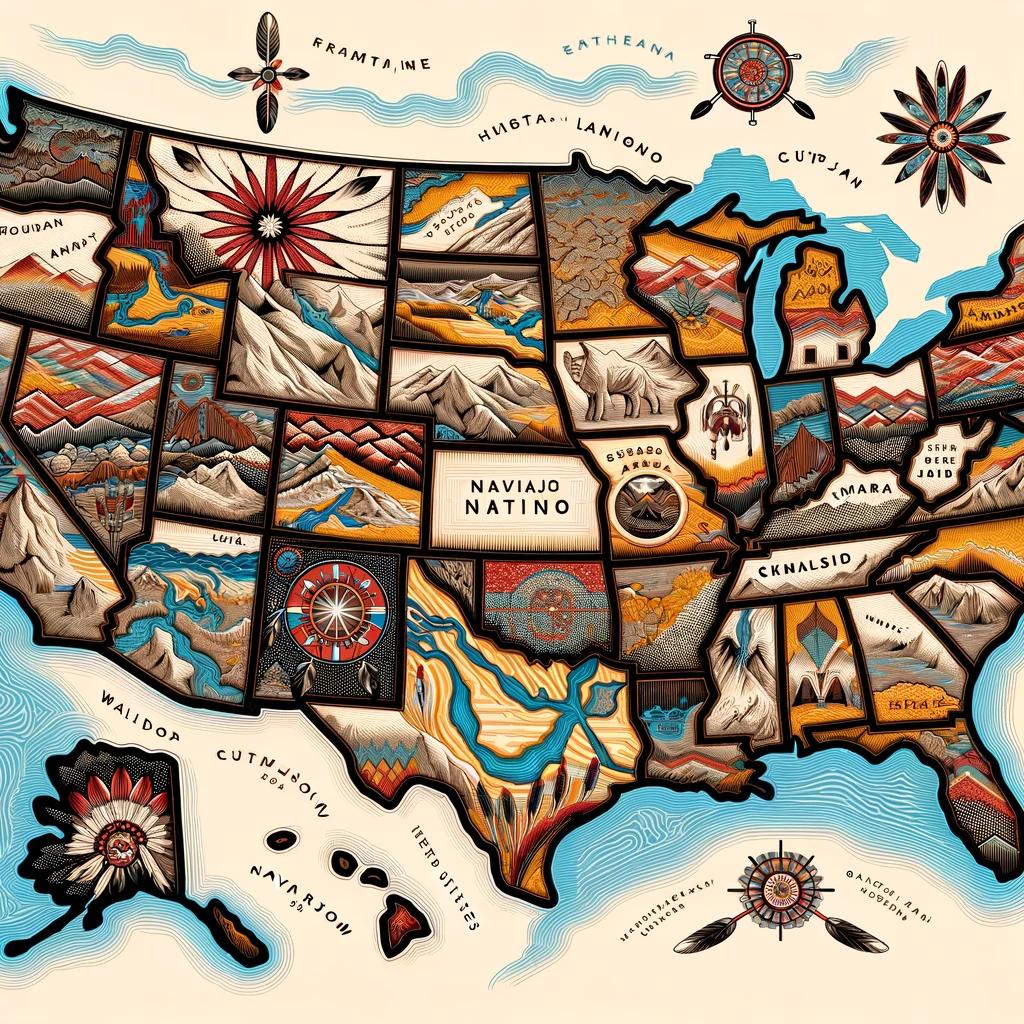
Navajo Land, also known as Navajoland, is a Native American reservation located in the southwestern United States. It spans parts of Arizona, New Mexico, and Utah, specifically in the Four Corners region.
With a land area of approximately 17,544,500 acres, it is the largest Native American reservation in terms of geographic area in the United States. The Navajo Nation has a rich history and diverse culture, with significant population growth in recent decades.
Water resources, such as rivers and groundwater, play a crucial role in sustaining the community and its future generations.
The Land of the Navajo Nation
The Navajo Nation is a vast Native American reservation located in the southwestern United States. It encompasses parts of Arizona, New Mexico, and Utah, covering approximately 17,544,500 acres. This expansive land holds great historical, geographical, and cultural significance for the Navajo people.
Historical Background of Navajo Land
Navajo Land’s history dates back to the Mexican-American War in 1848 when the United States acquired these lands. The Navajo Indian Reservation was initially established in 1868 as the “Navajo Indian Reservation” within the Territory of New Mexico, and it later expanded across the Arizona and New Mexico border in 1912.
Unlike many other reservations, Navajo Land has undergone multiple expansions since its formation, reaching its current boundaries in 1934.
Geographical Location of Navajo Land
Navajo Land is situated in the region known as the Four Corners, where Arizona, New Mexico, Utah, and Colorado meet. It spans through the northeast of Arizona, the northwest of New Mexico, and the southeast of Utah.
The reservation’s headquarters are located in Window Rock, Arizona. The land exhibits a diverse topography, ranging from low elevations of 5,500 feet to soaring heights of 10,500 feet, within the arid deserts of the Colorado Plateau’s physiographic province.
The Importance of Water Resources in Navajo Land
Water plays a vital role in the history, sustenance, and future of the Navajo Nation. The reservation has access to both surface and groundwater sources, which are used for irrigation, industrial purposes, municipal and domestic use, livestock, and more.
The Colorado, San Juan, and Rio Grande river basins traverse the lands of the Navajo Nation, granting the tribe extensive but largely unquantified water rights. Sustainable use of groundwater resources remains essential to ensure an adequate supply for future generations.
The Navajo People: Culture and Language
The Navajo Tribe, also known as Diné in their native language, has a rich and vibrant culture that spans centuries. They have preserved their traditional practices and ceremonies, passing down their heritage from one generation to the next.
The Navajo people have a strong connection to their land, which has shaped their cultural identity.
The Rich and Vibrant Culture of the Navajo Tribe
The Navajo culture is characterized by its deep spirituality, intricate artwork, and complex belief systems. Their traditional practices, such as sacred ceremonies and traditional medicine, play a central role in their daily lives.
Navajo artisans are renowned for their skills in weaving rugs, crafting jewelry, and creating intricate pottery. These artistic expressions reflect the Navajo people’s connection to their land and their reverence for nature.
Navajo cuisine is another aspect of their culture that showcases their traditional practices. Traditional Navajo dishes, such as frybread, corn soup, and mutton stew, have been passed down through generations and continue to be enjoyed by the community.
The Navajo Language: A Complex and Indigenous Tongue
The Navajo Language is an integral part of the Navajo culture. It is a complex and indigenous tongue, known for its intricate grammar and structure. Navajo is a tonal language, which means that the pitch and tone of the words convey different meanings.
It is also a highly contextual language, with verb forms changing based on factors such as tense, aspect, and speaker gender.
- Navajo language is mainly spoken by the Navajo people, and efforts are being made to preserve and revitalize it.
- Navajo is not related to English or Spanish, making it a unique and distinct language.
- Language immersion programs and educational initiatives are helping to ensure the survival and continued use of Navajo as a living language.
Despite the influence of English and the challenges of language shift, many Navajo individuals remain fluent in their native tongue, emphasizing its importance in maintaining cultural identity and transmitting traditions to future generations.
Exploring Navajo Land: Parks and Monuments
Embark on a journey through Navajo Land’s stunning parks and monuments, where natural wonders and cultural landmarks await. Discover the rich heritage and captivating landscapes through the following destinations:
National Parks and Recreation Areas in Navajo Land
- Experience the beauty of Canyon de Chelly National Monument, home to ancient ruins and towering sandstone cliffs.
- Immerse yourself in the serene landscapes of Navajo National Monument, where ancient cliff dwellings tell a fascinating story.
- Explore the vast wilderness of the Rainbow Bridge National Monument, a sacred site revered by the Navajo people.
Monument Valley: Iconic Landmarks of Navajo Land
Step into the world of iconic natural landmarks in Monument Valley, a mesmerizing landscape known for its towering buttes and magnificent sandstone formations.
Marvel at the famous Mittens and other towering rock formations that have graced countless movies and photographs.
Canyon de Chelly National Monument: A Window into Navajo History
Discover Canyon de Chelly National Monument, where breathtaking sandstone cliffs reveal a glimpse into Navajo history, culture, and ancient ruins. Explore the majestic canyons, hike along the rim, or embark on a guided tour to fully appreciate the significance of this sacred place.
Navajo Government and Institutions
The Navajo Nation Council: Governance and Decision-Making
The Navajo Nation Council serves as the governing body of the Navajo Nation. Consisting of elected representatives from various chapters, the council makes important decisions regarding the policies, laws, and regulations of the Navajo Nation.
They work together to address the needs and concerns of the Navajo people and ensure the development and progress of the community.
The Navajo Nation Government and Law Enforcement
The Navajo Nation has its own government structure, similar to a sovereign nation. It operates three branches: the Executive Branch, headed by the Navajo Nation President; the Legislative Branch, represented by the Navajo Nation Council; and the Judicial Branch, which includes the Navajo Nation Supreme Court.
These branches work together to enforce laws, provide services, and protect the rights and welfare of the Navajo people.
Law enforcement in Navajo Land is primarily the responsibility of the Navajo Nation Division of Public Safety.
This division includes the Navajo Police Department, which maintains law and order, responds to emergencies, and investigates crimes within the reservation. They work closely with federal, state, and local law enforcement agencies to ensure the safety of the community.
Navajo Tribal Utility Authority: Providing Essential Services
The Navajo Tribal Utility Authority (NTUA) plays a crucial role in providing essential services to the Navajo Nation. As a multi-utility enterprise, NTUA manages and operates various utilities, including electric, water, wastewater, natural gas, and communications.
They ensure that the Navajo people have access to reliable utilities, thereby improving their quality of life and promoting economic development in the region.
NTUA also focuses on renewable energy projects, aiming to reduce dependency on fossil fuels and promote sustainable energy practices.
They actively collaborate with other organizations and tribes to develop innovative solutions for energy needs while preserving the environment.
In summary, Navajo Government and Institutions play a vital role in governing the Navajo Nation and addressing the needs of its people.
The Navajo Nation Council, Navajo Nation Government, and Navajo Tribal Utility Authority work together to ensure effective governance, provide essential services, and promote sustainable development within Navajo Land.
Population and Growth of the Navajo Nation
The Navajo Nation has experienced significant population growth in recent years, with the number of tribal members steadily increasing.
This section explores the population trends and demographics within Navajo Land, as well as the social, economic, and educational challenges faced by the Navajo people.
Population Trends and Demographics in Navajo Land
The population of the Navajo Nation has seen a remarkable increase in the past few decades.
In 2010, the reservation was home to 173,667 tribal members, and by 2020, this number had risen to 399,494. This population growth reflects both natural increases and the enrollment of new tribal members.
The demographics of the Navajo Nation are diverse, with various age groups represented. The reservation has a relatively young population, with a significant percentage of individuals under the age of 25.
Additionally, the Navajo Nation has a high proportion of multi-generational households, where multiple generations live together under one roof.
Despite the increase in population, challenges such as unemployment, poverty, and limited access to healthcare persist within Navajo Land.
Efforts are being made to address these issues and provide better opportunities for the Navajo people.
Social, Economic, and Educational Challenges Faced by the Navajo People
The Navajo Nation faces various social, economic, and educational challenges that impact the overall well-being of its population. High unemployment rates have been a longstanding issue, with limited job opportunities available within the reservation.
This has contributed to economic disparities and financial struggles for many Navajo families.
Educational attainment is another area of concern. Access to quality education can be limited, with a shortage of schools and resources in some areas of the reservation.
Efforts are being made to improve educational opportunities and support Navajo students in pursuing higher education.
Improving healthcare services and infrastructure is also a critical challenge. Many remote areas within Navajo Land have limited access to healthcare facilities, leading to healthcare disparities and inadequate healthcare outcomes for some tribal members.
Navajo leadership and community organizations are working to address these issues and improve healthcare access and services.
By addressing these challenges and fostering economic development, educational opportunities, and access to healthcare, the Navajo Nation aims to create a brighter future for its population and ensure the well-being of its people.
Future Sustainability and Preservation of Navajo Land
The Navajo Nation is committed to ensuring the future sustainability and preservation of Navajo Land. Efforts are being made to implement various environmental initiatives and conservation measures in order to protect the natural resources and maintain the ecological balance of the land.
Environmental Initiatives and Conservation Efforts in Navajo Land
Navajo Land is home to diverse ecosystems, including deserts, forests, and mountains. To safeguard these precious natural habitats, the Navajo Nation has established environmental initiatives and conservation efforts.
- Protecting Wildlife and Biodiversity: The Navajo Nation has implemented programs to conserve native plants and animals, including species that are culturally significant to the Navajo people.
Efforts are made to preserve habitats and reduce threats to endangered species.
- Sustainable Land Management: The Navajo Nation encourages sustainable land practices such as reforestation, soil conservation, and responsible grazing to prevent soil erosion and preserve the fertility of the land.
- Renewable Energy Development: Recognizing the importance of reducing reliance on fossil fuels, Navajo Land is embracing renewable energy sources such as solar and wind power.
The development of clean energy projects not only helps reduce environmental impact but also provides economic opportunities for the Navajo people.
- Water Conservation: Navajo communities are adopting water conservation practices to ensure the sustainable use of this vital resource.
Programs focus on improving irrigation techniques, promoting water recycling, and raising awareness about the importance of water stewardship.
Preserving Navajo Heritage for Future Generations
The Navajo Nation is dedicated to preserving its rich cultural heritage for future generations. Efforts are underway to protect and promote Navajo traditions, language, arts, and craftsmanship.
- Cultural Centers and Museums: Cultural centers and museums are established throughout Navajo Land to preserve and showcase Navajo history, art, and traditional practices.
These institutions serve as educational resources and community gathering spaces.
- Language Revitalization: Recognizing the importance of language in preserving cultural identity, the Navajo Nation is actively engaged in language preservation and revitalization programs.
Efforts are made to teach the Navajo language, as well as to document and archive traditional stories and oral histories.
- Arts and Crafts Promotion: To support Navajo artisans and craftsmen, the Navajo Nation promotes the production and sale of authentic Navajo arts and crafts.
This helps sustain traditional art forms and provides economic opportunities within the community.
- Preservation of Sacred Sites: Navajo Land is dotted with sacred sites that hold immense cultural and spiritual significance.
The Navajo Nation is dedicated to preserving and protecting these important locations, ensuring their integrity for future generations.
In conclusion, the Navajo Nation is actively working towards a sustainable and thriving future for Navajo Land.
Through environmental initiatives, conservation efforts, and the preservation of Navajo heritage, the Navajo people are safeguarding their ancestral land, culture, and natural resources for generations to come.
Exploring Surrounding Areas: Nearby Towns and Attractions
When visiting Navajo Land, there are several nearby towns and attractions that offer unique experiences and opportunities to immerse yourself in the rich Navajo culture and breathtaking natural wonders.
Window Rock: Capital City and Cultural Center
Located within Navajo Land, Window Rock serves as the capital city and cultural hub of the Navajo Nation. Home to the Navajo Nation Council Chamber and the Navajo Nation Museum, this vibrant city offers a glimpse into the history, traditions, and governance of the Navajo people.
While exploring Window Rock, be sure to visit the Window Rock Navajo Tribal Park, showcasing the iconic sandstone formation that gives the city its name.
Antelope Canyon and Lake Powell: Natural Wonders Nearby
Just a short drive from Navajo Land, you’ll discover the mesmerizing beauty of Antelope Canyon and Lake Powell.
Antelope Canyon, known for its narrow slot canyons and stunning light beams, offers a photographer’s paradise. Explore the canyon through guided tours and witness the interplay of light and shadow on the curving sandstone walls.
Nearby, Lake Powell provides opportunities for boating, kayaking, and swimming, surrounded by spectacular red rock formations.
Tuba City and Gallup: Navajo Culture and Traditions
Immerse yourself in Navajo culture and traditions by visiting Tuba City and Gallup, neighboring towns near Navajo Land. Tuba City is known for its rich Native American heritage and is home to cultural centers, such as the Explore Navajo Interactive Museum and the Dineh Trading Post.
Experience traditional Navajo dances, music, and artwork that showcase the tribe’s vibrant heritage. Gallup, a gateway to Navajo Land, hosts the annual Inter-Tribal Indian Ceremonial, highlighting diverse Native American cultures through art, dance, and music.
Whether exploring Window Rock’s cultural significance, marveling at the natural wonders of Antelope Canyon and Lake Powell, or immersing yourself in the traditions of Tuba City and Gallup, the surrounding areas of Navajo Land offer a diverse range of experiences that will leave you with a deeper appreciation of the Navajo culture and the stunning landscapes of the Southwest United States.
Frequently Asked Questions (FAQs) about Navajo Land
What is the Navajo Nation and where is it located?
The Navajo Nation is a Native American reservation located in the southwestern United States, spanning parts of Arizona, New Mexico, and Utah. It is the largest Native American reservation in the country.
How large is Navajo Land and what is its significance?
Navajo Land covers approximately 17,544,500 acres, making it the largest Native American reservation in terms of geographical area. Its significance lies in its cultural and historical importance to the Navajo people, who have inhabited these lands for centuries.
What are some popular tourist destinations in Navajo Land?
Navajo Land is home to several popular tourist destinations, including:
- Monument Valley: Known for its iconic red sandstone formations and stunning desert landscapes.
- Canyon de Chelly National Monument: Offers a glimpse into Navajo history with its ancient cliff dwellings and scenic canyons.
- Antelope Canyon: A slot canyon known for its mesmerizing light beams and unique rock formations.
- Lake Powell: Offers opportunities for boating, fishing, and exploring picturesque canyons.
What is the population of the Navajo Nation and how has it changed over time?
The population of the Navajo Nation has experienced significant growth over time.
In 2010, the reservation was home to 173,667 tribal members.
What are the challenges faced by the Navajo people in Navajo Land?
The Navajo people in Navajo Land face various social, economic, and educational challenges. These include a high poverty rate, limited access to healthcare and educational resources, as well as the preservation of their cultural heritage and language in the face of modernization.
Efforts are being made to address these challenges and promote sustainable development within the community.
.

